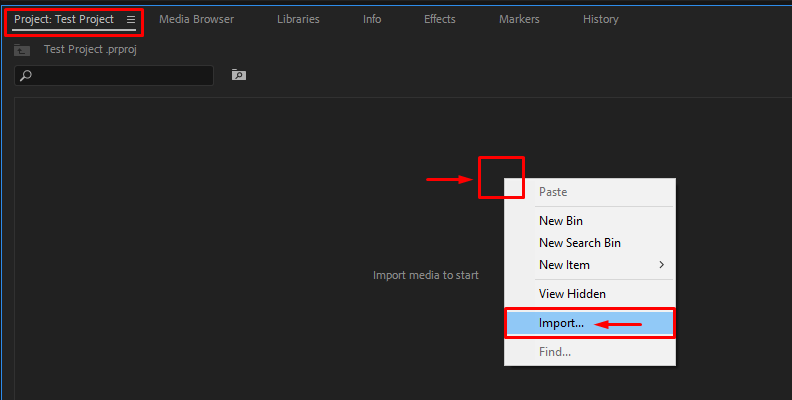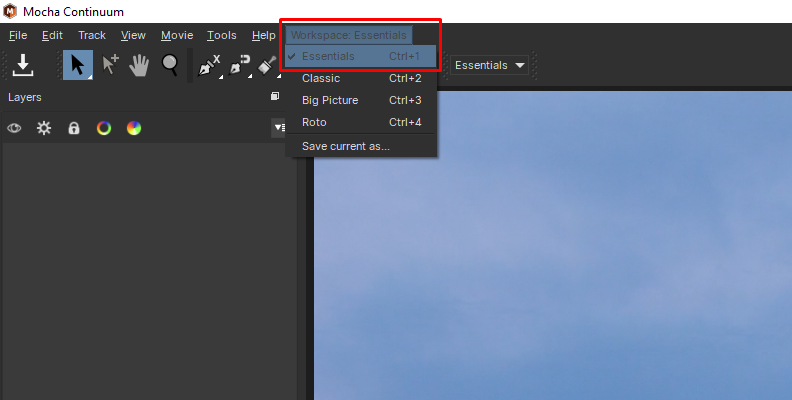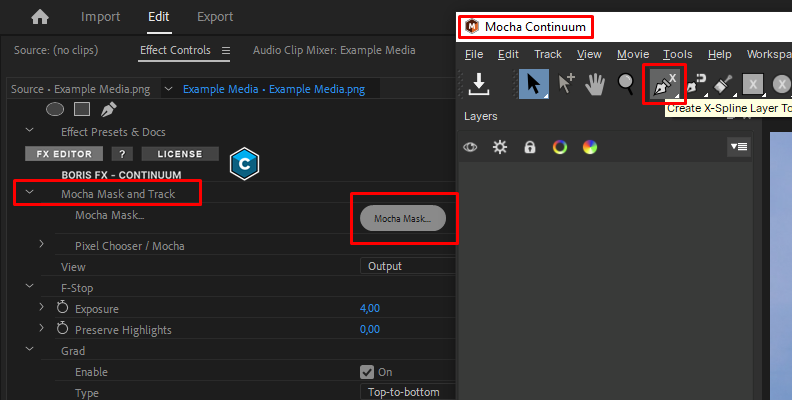If you're looking for a quick and simple tool to selectively darken a picture or video to add depth that allows you to customize the selection, track the effect, and create presets, this article is for you!
In this tutorial, I'll show you how to darken a specific area of a photo using Boris FX Continuum.
How to Darken Part of an Image with BCC+ ND Gradient
For this tutorial, you'll use BCC+ ND Gradient, a Continuum filter, to darken an image in a specific area. It uses a gradient to transition from the darkened selected area to the original picture. Working with BCC+ ND Gradient lets you apply easy darken gradients without worrying about color balance.
The filter selectively adjusts the brightness, making it ideal for backgrounds and landscape photos where you must balance the colors between the ground and the sky or create the twilight effect.
-
Step 1: Download and Install Continuum or Optics
BCC+ ND Gradient is part of Boris FX Continuum (note: if you're photo editing or use Photoshop and Lightroom, you can also use the ND Gradient tool in Optics). If you have Continuum installed, you'll have it on your effects library. To getthe Boris FX Hub and install it. Log in or create a new account and find Continuum from the products list. Select the Continuum version for your host and install itcontinuum
Continuum gives content creators access to the most complete plugin toolkit. Conquer daily post-production tasks fast with film looks & color grades, image restoration tools, keying & compositing, 3D particles, and tons more. Available for Adobe, Avid, FCP, and OFX host applications.continuum
The Boris FX Hub will download the free trial, which is fully functional to follow this tutorial. If you have a license, you can activate it by clicking on the gear icon next to your username.
-
Step 2: Set Up a New Project
Open your host editing program, import the photos you want to darken with BCC+ ND Gradient, and drag them to a new sequence. Arrange your images and videos and do the basic editing before applying the filters.
 NOTE: For this specific example we'll be using Adobe Premiere Pro. Keep in mind that you can use any other software of choice that Continuum is compatible with, which means most popular editing programs. If you're photo editing, feel free to use the ND Gradient tool in Optics (which also works in Photoshop and Lightroom). The process will be the same, besides the minor differences in the user interface across various software.
NOTE: For this specific example we'll be using Adobe Premiere Pro. Keep in mind that you can use any other software of choice that Continuum is compatible with, which means most popular editing programs. If you're photo editing, feel free to use the ND Gradient tool in Optics (which also works in Photoshop and Lightroom). The process will be the same, besides the minor differences in the user interface across various software.


-
Step 3: Apply the BCC+ ND Gradient
Proceed to your effects library and browse through the Boris FX filters. BCC+ ND Gradient is under the BCC Grads & Tint subgroup. Select the effect and drag and drop it to the picture you want to darken.


The effect will apply to the picture with the default settings. Continue to learn how to edit the filter to get the desired effect for your image.
-
Step 4: Explore the BCC FX Editor
One of the features of the BCC+ ND Gradient effect is that it has a few presets you can select and apply to darken your photo quickly. It allows you to create and save presets and build your preset library to streamline your photo editing workflow.


To launch the preset library, click 'FX Editor' at the top of the filter's parameters. Pick a preset to preview it, click Apply to exit the FX Editor, and return to your photo editor program.

-
Step 5: Edit the BCC+ ND Gradient Effect
You can adjust the effect from the FX Editor or your host effect's settings. You have the same settings except for the Mocha Mask and Track and Blending features, which are only available from the host program. You can proceed as you prefer.

The first parameter is the F-Stop, where you can adjust the Exposure slider to darken the image. You can also change the Preserve Highlights slider to protect the lighter areas of the image.
The next step is to create a gradient that transitions between the darkened area and the rest of the image. Under the Grad settings, select the type of gradient and set its direction.
Change the View from Output to Grad to see how the gradient looks as you edit it. You can modify the Size, Angle, and four edges to create original gradients to darken your image.
Change the View to Output to see the output image. You can modify the exposure to make the image lighter or darker.
-
Step 6: Mocha Mask and Track
Use the Mocha Mask and Track settings to restrict the effect to a specific area of the image or to follow an object in the footage. Click the Mocha Mask button to launch the Mocha planar tracker.

Create an easy mask with the brush tool. First, ensure you are in the Essential Workspace for a more friendly interface. Select the brush from the toolbar to create the mask layer. Adjust the brush size and paint the areas you want to darken from the image with the brush. Create as many brush layers as you need.
For tracking, you can use the spline tools for more precise masking. Once you're ready, save the project and close Mocha.

In your host, display the Pixel Chooser/Mocha settings to edit the mask. You can invert it and adjust intensity, opacity, and the mask feather.
What Tools Can Make a Portion of an Image Darker?
The next darkening tools are alternatives to the BCC+ ND Gradient to make a photo darker.
-
Adobe Photoshop – Burn Tool
Photoshop is known for its wide-ranging tools for photography, graphic design, and photo manipulation. There are many options to darken a photo with Photoshop, but the Burn tool is a popular choice and an easy way to selectively darken areas in a picture. The Burn tool's settings include midtones, shadows, highlights, exposure, airbrush mode adjustments, and options to protect the tones from clipping or shifting hue.
Use the Burn tool by selecting it, adjusting the brush size, and painting over the area. The more you paint the picture, the darker the result.


-
Lightroom – Adjustment Brush
Lightroom is another popular application to edit photos with the tools and sliders in the Develop module to the entire image. However, Lightroom also offers an Adjustment Brush tool to make corrections to specific sections of an image, for example, to darken part of the photo.
The tool can be selected from the Develop module. You can adjust brush size, feather, flow, exposure, shadows, contrast, and the rest of the sliders to get the darker tone you want.


Final Words
Now you know a quick and creative tool to apply a darkening effect to a photo or video, plus two alternative tools within Photoshop and Lightroom. Whether you're editing a picture or video, the Continuum plug-ins provide easy and unique ways to develop your creative and photography skills.
Good luck!







